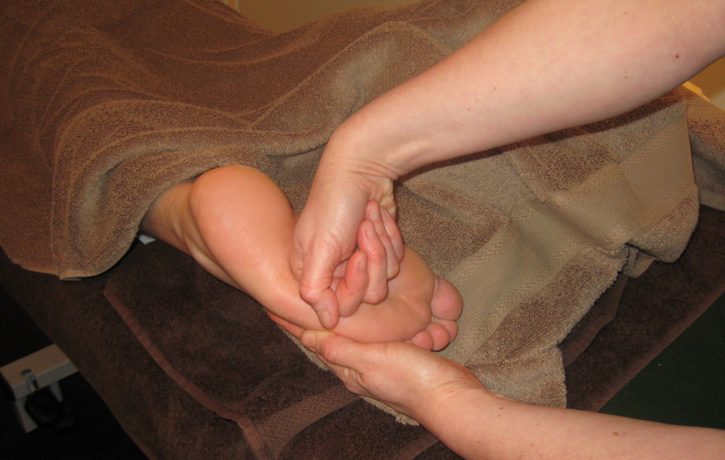Plantar Heel Pain

Plantar heel pain is an umbrella term used to describe pain under the heel bone towards the rear of the foot.
A common condition that causes pain here is known as Plantar fasciopathy. You may have heard the term plantar fasciitis but this is now out of date as the ‘itis’ at the end means inflammation, and research has demonstrated that the pain in the plantar fascia is often not driven by inflammation as previously thought. Some people can suffer with pain into the mid arch of the foot, but it is definitely statistically more common under the heel.
Research has shown that it most often affects the more physically active population at any age and a more sedentary group between 40 and 60 years old.
Factors such as weight, tight muscles and repetitive activities have been blamed as a cause of heel pain. Yet people without tight muscles or not obese still get plantar fasciopathy and not all obese and those with tight calf’s get it. There does seem to be a link with running as statistically it affects 5 to 7% of the population as a whole and could be as much as 10% in an active population. The fact is we don’t truly know why one person is affected and another not, what we do know is the pathophysiology and that it has a natural history and will resolve completely on its own even without intervention.
The problem lies in how sore it can be, and how long that natural history is (around 8-10 months but can be longer). Management of symptoms during this time is important and there is even some emerging research data that suggests that we may be able to reduce the time frame of symptoms with some specific exercises.
General management is focused on symptom management and pain relief and there is lots of anecdotal evidence about the things that do help. I would not dismiss anything that has helped someone in the past but I tend to stick with about 5-6 things that I have found to be the most helpful in the majority of cases.
Stretching the plantar fascia by pulling back on both the ankle and big toe together and holding it for about 3 minutes has helped some people when it is particularly sore (tends to be worst first thing in the morning or on getting up after a period of rest).
Rolling the arch over a tin of hairspray or tennis ball can be exquisitely painful but satisfying at the same time.
You can also roll on a frozen orange or bottle of water to combine the massage with cryotherapy.
Heel cup inserts in the shoes can help relieve pain, alternatively ladies can try different height heels to find what feels right.
Recent research has suggested that loading the plantar fascia in specific ways will help the tissues recover faster in the same way that we manage tendinopathies. However, this is fairly new research so the data is not particularly convincing just yet but looks promising.
Contact The Body Matters on 01702 714968, where we can direct you to Matthew Oliver.
- Deepen Embodiment: Somatic Breathing with the Realization Process - 20th June 2025
- How Massage Transforms Muscle and Physical Health - 16th May 2025
- What is Traditional Chinese Medicine (TCM)? - 29th April 2025
